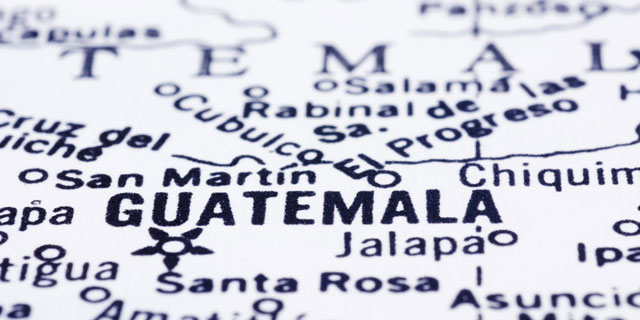It’s hard to find a bad meal in Guatemala. Spanning across its 22 districts are culinary traditions as different from one another as the vendors who sell them. In La Antigua, Guatemala’s tourist hub, tiny hole-in-the-wall eateries (called comedores or rincones) serving local no-fuss favorites sit adjacent to modish establishments where chefs spend their careers perfecting pepían or jocón. In remote villages nestled deep in the highlands, tiny corner stores sell stacks of fresh corn tortillas and piping hot bowls of beans to both locals and worn backpackers alike. And along the Pacific and Caribbean coasts, exotic tropical flavors and an abundance of plentiful fresh seafood inspires local cuisine. No matter where you are in Guatemala, good food is around every corner.
Although the food traditions of Guatemala were more limited in the past than they are today, the flavors and ingredients of the ancient Mayans still heavily influence many Guatemalan food favorites. Squash and their seeds, chilies, chocolate, corn, and beans – staples of a traditional Mayan diet – are used widely in popular Guatemalan dishes today and are still consumed daily by the Mayans’ modern-day descendants.
When the Spaniards invaded Guatemala in the 16th century, they brought with them exotic items like rice, wheat, and refined sugar, as well as their taste for regular meat consumption. On the Caribbean coast, the Garífuna people, a group descendants from African slaves brought to Guatemala in the 17th century, as well as other indigenous locals, utilize more tropical ingredients like coconut milk and cassava (yucca, manioc). Up until recently, because traveling over Guatemala’s lush but mostly mountainous terrain was difficult, culinary micro-pockets appeared offering specialties only found within that region such as tapado in the northwest, shekas outside of Xela, or flan antigüeño outside of Antigua.
While some may contend that holiday-only dishes like fiambre on All Saints Day or empanadas de leche during Semana Santa make Guatemala a Central American culinary stand out, it’s the simpler, everyday dishes that hold this title. So, for the uninitiated, your mini culinary tour awaits below. As they say in Guatemala, “¡Buen provecho!
Next, three classic dishes from Guatemala… [pagebreak]
Frijoles Negros (black beans)
Beans are as plentiful in Guatemala as volcanoes or street dogs. First grown in Guatemala thousands of years ago, today blacks beans are a major part of most of the country’s daily diet, especially among families who can’t afford to buy meat. Beans are served whole, boiled with salt, pulverized then fried in oil with onion and garlic (frijoles volteados) or stewed with tomatoes, ground chilies and a bit of chorizo or pork fat if it can be spared. And while varieties range from kidney to navy to piloy, in Guatemala, the black bean reigns supreme.
Pepían is arguably the most well known dish to come out of Guatemala. The dish is a happy blend of two major culinary influences. This stew is hearty, made from charred tomatoes, dried chiles, onions and garlic blended into a sauce with toasted sesame and pumpkin seeds. That sauce, mixed with stewing liquid left over from boiling chicken or pork, becomes the base for a güisado. Carrots, potatoes, güísquil and güícoy are added, as well as the meat and a fair bit of cilantro. Served with tortillas or rice, pepían is a staple at most family get-togethers.
Tapado
As popular as pepían is in central Guatemala, tapado reigns supreme in Livingston, a coastal town on the Caribbean coast and Guatemala’s home to its largest Garífuna population. Everywhere you walk in the tropical-feeling beach town, small handmade signs are posted outside of modest eateries, “Hay tapado”. It consists of a coconut milk and achiote-laced broth, large but tender pieces of green plantain and cassava, and a bounty on fresh seafood. Local crabs, shrimp, fish fillets are traditional, or sometimes even a whole fried fish nestled at the edge of the bowl. The flavor is both distinctly Caribbean yet it will live in your Guatemalan food memories as vividly as corn tortillas and world-class coffee.


![Making Mealtime Matter with La Familia: Easy Sofrito [Video]](https://thelatinkitchen.com/wp-content/uploads/2015/10/sofrito-shutterstock__0-500x383.jpg)
![Easy Latin Smoothies: Goji Berry Smoothie [Video]](https://thelatinkitchen.com/wp-content/uploads/2015/12/goji_berry-shutterstock_-500x383.jpg)
















![Fun and Fast Recipes: Fiesta Cabbage Salad [Video]](https://thelatinkitchen.com/wp-content/uploads/2015/11/fiesta_cabbage_slaw-shutterstock_-500x383.jpg)









